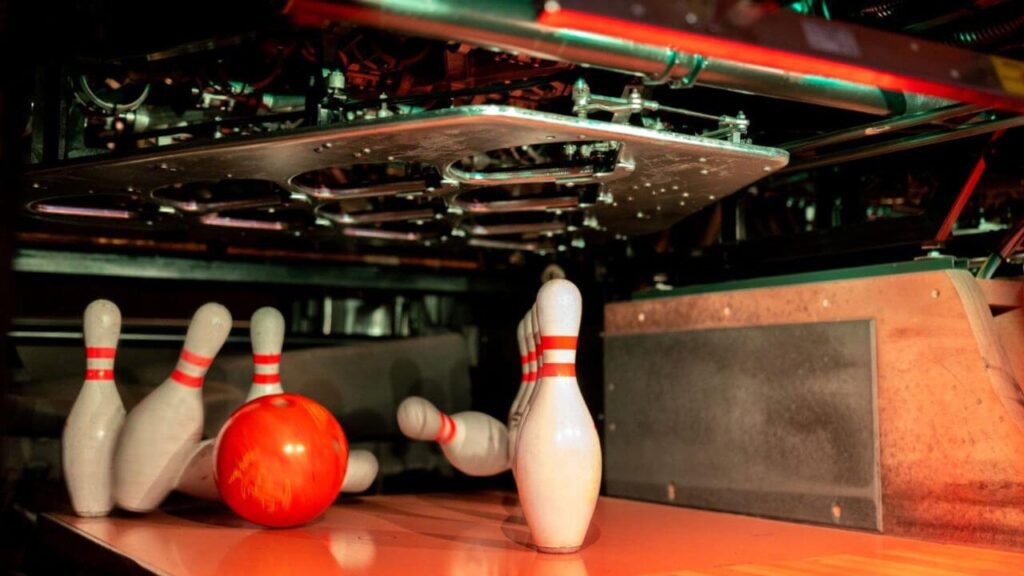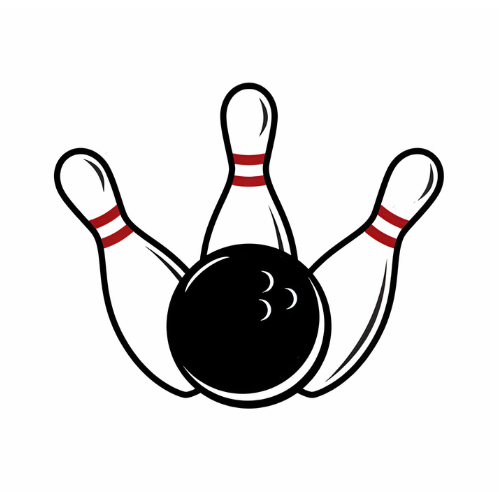If you want to improve your bowling performance, both the symmetrical and asymmetrical ball can help. The symmetrical ball produces a smoother, even, and controllable reaction on the dry lane. Contrarily, the asymmetrical ball creates a sharper and speedier motion with less friction on the oily lane. So, symmetrical Vs asymmetrical bowling ball What is your right choice? Before selecting a suitable ball, figure out your bowling lane condition and your expertise level. Expert-level bowlers typically use asymmetrical balls in order to dominate the bowling lane with high speed. The symmetrical ball, on the other hand, is used by amateur or mid-level players who require smoother performances. Our conversation may have influenced you to make an immediate decision. But you’ll need more research to reach a conclusion. So, let’s take a closer look at the symmetrical and asymmetrical bowling balls.

Definition of Symmetrical and Asymmetrical Cores
Symmetrical Core
Symmetrical core technology refers to bowling balls that offer similar appearances to their all-around axis. Simply, the symmetric bowling balls are slimmer, equal to look and feature a consistent profile. The RG values of high RG and intermediate RG axes are less than 5% of the symmetrical bowling ball’s differential.
Asymmetrical Core
Asymmetrical core refers to the high-performing bowling ball that offers greater weight distribution. The asymmetrical core doesn’t provide similar appearances from the bottom to the top. Nevertheless, evaluating the asymmetrical core offers modified and increased bowling experiences. The RG values of the high RG and intermediate RV axes aren’t less than 5% of the bowling ball’s differentials.
Symmetrical Vs Asymmetrical Bowling Ball – Which Ball Should You Get?
Before drilling your bowling ball, you should know whether you want to drill it symmetrically or asymmetrically. The bowlers choose both bowling balls considering their types. So, what should be your choice about the symmetrical vs. asymmetrical bowling ball? Let’s differentiate between symmetrical and asymmetrical bowling balls to make the decision.
| Differencing Factors | Symmetrical Bowling Ball | Asymmetrical Bowling Ball |
| Motion and reaction | The symmetrical balls produce smoother predictable and even reactions and motion. | The asymmetrical bowling ball produces sharper, speedier, and more pronounced motion. |
| Controlling | It is widely assumed that symmetrical drilled balls move in a smooth, controllable manner. Given the same coverstock composition and preparation. | Asymmetrical balls have a defined, angular shape down lane that responds to friction faster than symmetrical balls. |
| Player’s choices | Good choice for rev dominant players. | Good choice for speed-dominant players. |
| Core variables | There Are 2 primary variables based on the symmetrical core. | There Are 3 primary variables based on the asymmetrical core. |
| Effects of rule changing | Changing the rules won’t affect the performance of the symmetrical bowlers. Only the pin placement becomes a matter of concern. | Adopting the new rules will affect the performance of the asymmetrical bowlers. The layout possibilities increase with the added variables and regulations. |
| The difference in RV values | The RG measurement values of the symmetrical bowling ball don’t differ more than 5%. | The RG measurement values of the asymmetrical bowling ball differ by more than 5%. |
| Appearances | Provides similar appearances from top to bottom. | Doesn’t provide similar appearances from top to bottom. |
| Proportion | Uniform proportion. | No uniform proportion. |
| Suitable lane | Suitable to play in the dry conditions bowling | Suitable to play oily and long pattern bowling lanes. |
| Friction Types and Amounts | Provides smoother and higher friction and yields a benchmark-type reaction | Provides an insufficient amount of friction. |
Should You Get Symmetrical or Asymmetrical Bowling Ball
Now, should you get a symmetrical or asymmetrical bowling ball – that’s still a mystery. A Symmetrical core produces a control and off-balance situation that ultimately creates a good amount of friction and hooks on the dry lane. The asymmetrical bowling ball on the dry bowling lane creates a bad release with lower potential hooks. Even in oily conditions, the asymmetrical core bowling ball will produce high speed but downward hooking.
Finally, if the bowling lane is dry, the symmetrical bowling ball will provide a more delicate release with good rev. For the oily lane condition, asymmetrical bowling will go smoothly and quickly. As a result, if you are a rev-dominant player, you must choose a symmetrical bowling ball. In contrast, if you are a fast bowler, the asymmetrical bowling ball is the best option for you. Expert and pro-level bowlers typically want to be the dominant players in their sport. The novice or amateur player, on the other hand, wishes to bowl as the rev-dominant player.
The Sum Up!
So if you want to get a fine tune while tweaking the bowling game, select one between the symmetrical and asymmetrical bowling balls. All our information and comparison of the symmetrical Vs asymmetrical bowling balls are for regular bowling players. But, the investment in bowling balls becomes unnecessary when you’re buying them for a few days. Ultimately, the differences and our information on the symmetrical and asymmetrical bowling balls won’t help.
